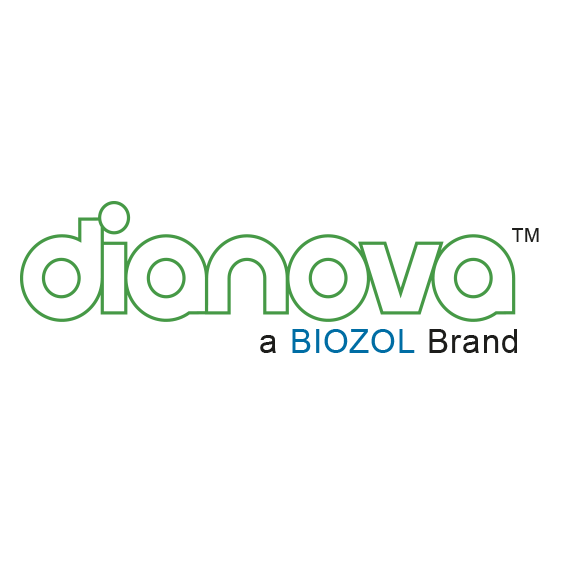Anti-PAX-8 (Paired box protein pax-8) (Hu) from Mouse (JAX8) – unconj.

-
Overview
SKU DIA-PX8-OD Specificity Species Reactivity Host Species Isotype Clone Clonality (Mono-/Polyclonal) Application ELISA, Immunohistochemistry (IHC), Immunohistochemistry (Paraffin-embedded Sections), Western Blot
Conjugation Dilution Format < 0.1% NaN3, 1% BSA, concentrate, in Tris buffer (pH 7.3-7.7), ProteinA/G purified antibody
Intended Use Temperature - Storage Temperature - Transport Manufacturer / Brand Uniprot_ID Gene_ID Alias - Datasheets and Downloads
-
Additional Product Information
PAX8 is a member of the paired box (PAX) family of transcription factors involved the regulation of early development of the thyroid gland, kidney, and Mullerian tract. PAX8 plays a central role for the expression of thyroid-specific genes and thus, in development of thyroid follicular cells. Mutations in the PAX-8 gene are linked to thyroid follicular carcinomas. In the developing kidney PAX8 is important for renal vesicle formation.
PAX8 is highly expressed in several neoplasms: Epithelial tumors of the thyroid and parathyroid glands, kidney, thymus, pancreatic neuroendocrine tumors and female genital tract. Follicular and papillary thyroid carcinoma are almost always PAX8 positive (while medullary thyroid carcinoma is negative, but anaplastic carcinoma is positive in most cases). PAX8 is also found in almost all cases of endometrial carcinoma and ovarian serous, endometrioid, transitional and clear cell carcinoma. Moreover, PAX8 is found in most cases of renal cell carcinoma (all types) and in oncocytoma as well as in thymic tumours. Different reports have shown that adenocarcinomas of lung and breast are negative for PAX8-expression. Also, PAX-8 is not found in the epithelial cells of the breast, lung, mesothelium, stomach, colon, pancreas.
PAX 8 is a useful IHC marker with a wide range of diagnostic applications and appears to be the most specific and sensitive marker for renal cell carcinoma and ovarian non-mucinous carcinoma
